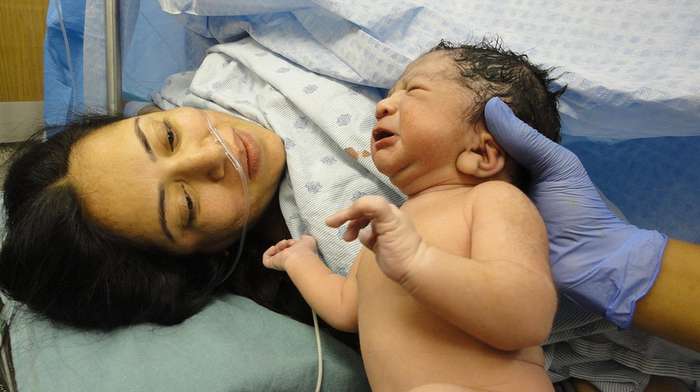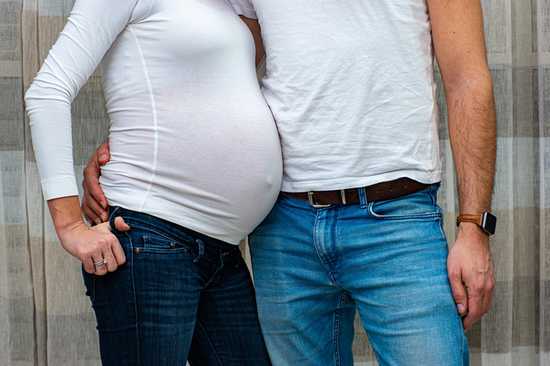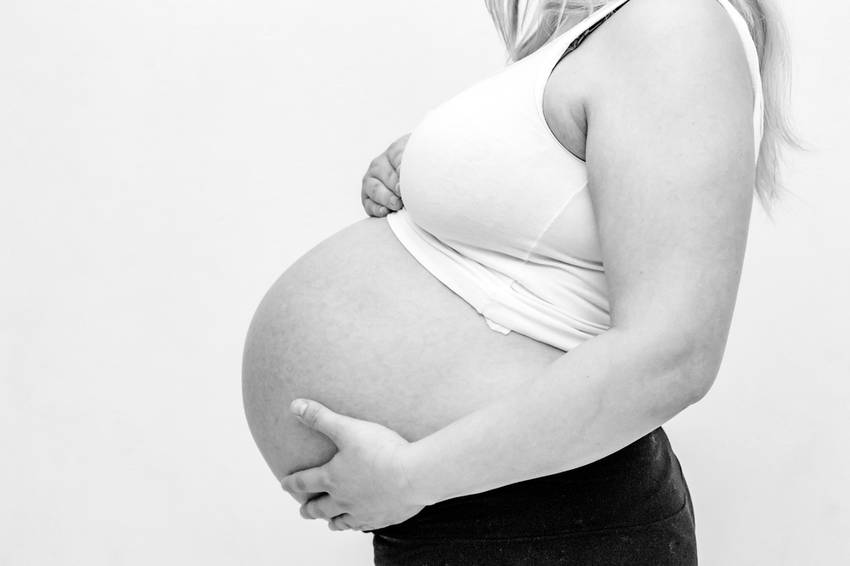The big day is almost here! You’ve been feeling the baby move for weeks and you’re pretty sure that today is the day. Congratulations! This blog post will give you an idea about what to expect in the next 24-48 hours. We’ll discuss the signs that labor is 24 To 48 hours away, as well as what happens during labor and delivery.

What Does Labor Pain Mean?
The discomfort and intense pressure you feel during childbirth is called labor pain. It’s caused by the uterus contracting as it opens up to let your baby pass through the birth canal. Labor pains usually start slowly and then get stronger over time.
1. To assist thin out your blood and avoid excessive bleeding throughout delivery, drink lots of liquids, especially water, during labor.
2. Light meals are recommended. Eating a substantial meal just before or during childbirth might cause nausea and vomiting, which can add to your dehydration.
3. Relaxation methods can help you. Try to focus on your breath and relax as much as possible during labor. This will assist you in remaining calm and better coping with the discomfort.
4. Consider using a support person during labor. Having another person present for emotional encouragement and to help with things like relaxation techniques or keeping hydrated can be beneficial.
5. If you’re in too much pain to function, consider epidural anaesthesia or other oral and topical medication options.
Signs That Labor Is 24 To 48 Hours Away
There is no hard and fast rule regarding how long it will take for labor to arrive if you have contractions. As previously said, there isn’t a set period between the appearance of symptoms and when labor starts.
Although it will be difficult to determine or predict when you will go into labor, you can look for warning signals to indicate your delivery is approaching.
There are subtle indications that you can’t detect without close examination; they include aggressiveness, tension, and anxiety, all of which a pregnant woman might experience.
The number, duration, and intensity of contractions reveal whether one is in labor. However, pay attention to the following physical symptoms.
This information will only assist you in becoming aware of what is to come and help you to be prepared.
1. Water Breaking
The first, most apparent, and most obvious indication is water breaking. In this instance, your amniotic sac is burst.
For most women, 70%-90%, when their water broke, they went into labor within the next 48 hours- most within 24 hours.
The amniotic sac, which is essentially a fluid-filled sac that protects the fetus as it grows, is one of two liquid compartments surrounding the fetus in a woman’s womb during pregnancy.
The amniotic fluid is heavy in hormones that stimulate labor to begin.
Contrary to what the media and television might lead you to believe, you don’t have to go through a gush of water, and you may feel a trickle of water or just a little dampness in your underwear to signal that your water has broken.
2. Losing Your Mucus Plug
There are several more obvious indicators that the next shift will be starting after 24 to 48 hours.
If you notice a change in your vaginal discharge, especially the passing of your mucus plug, your body is ready to give birth.
The mucus plug is a collection of thick mucus that forms a seal over the cervix opening.
It’s generally pink or transparent, but it has traces of blood. There shouldn’t be any cause for concern based on its color.
The mucus plug, or as it is frequently referred to, the bloody show in the toilet when using a toilet, appears on women’s underwear or while wiping after urination.
It’s also possible to lose your mucus plug weeks before giving birth, although it happens days or hours before delivery.
3. Real Contractions
Real contractions are yet another well-known sign that labor is approaching. To be distinguished from Braxton Hicks’s contractions, real contractions are another popular indication that labor is about to begin.
False contractions, also known as Braxton hicks contractions, indicate impending labor. They might show up months or even weeks before the baby is born.
Real contractions, on the other hand, are frequent and powerful, lasting for more than a minute.
This is what causes the cervix to thin and expand, preparing it for delivery.
If you are experiencing contractions more frequently, particularly after 4 to 5 minutes, you should expect delivery in less than 48 hours.
4. Low Back Pain
Pregnancy causes joint and ligament looseness in preparation for childbirth, which is why back discomfort is typical. Pre-labor back pain, on the other hand, is distinct and far more severe.
When labor is 24 to 48 hours away, lower back discomfort and pain may spread to your pelvis region. Changing position does nothing for you, and the discomfort generally lingers until after birth.
5. Cervical Dilation
Checkups will begin once you reach the third month of your pregnancy. Your doctor will check your cervix at the end of each week to see how far you’ve dilated.
Dilation refers to the cervix softening so that the baby may pass through it. Although a vaginal delivery necessitates that the cervix dilates at least 10 centimeters, cervical dilation of 2 to 3 centimeters is frequently observed 24 to 48 hours before labor begins.

6. Loosening Of Joints
Relaxin levels are increased at the end of pregnancy, causing your joints and ligaments to loosen in preparation for birth.
You may notice looser, more relaxed joints in your pelvis and lower back a few days before labor. You might also have an unforeseen result of relaxing – diarrhea. This is due to the relaxation of the muscles around your rectum.
7. Diarrhea
Diarrhea might be an indicator of pregnancy. The loose stool is caused by prostaglandins, which are released in advance of dilating your cervix for delivery, causing the intestines to empty.
An empty stomach is a good sign because it allows for extra room for the baby and less chance of bowel movements during labor.
8. Cramps
You may get abdominal and pelvic cramps 24 to 48 hours before your labor begins, much like menstrual cramps. These pains are brought on by uterine contractions, which will become more frequent and strong as labor progresses.
Keep in mind that these are not the same as Braxton Hick’s contractions, which are usually painless and a false alarm. These cramps have at least some mild discomfort, suggesting you’re going into actual labor.
What Are Some Of The Baby Boy Labour Pain Symptoms?
There are three main types of pain that you will experience during baby boy labor:
Back pain: You will likely feel a great deal of back pain during labor. This is because the baby is putting pressure on your spine as he or she moves down the birth canal. The best way to cope with this type of pain is to sit up straight and use a pregnancy pillow to support your back. You may also want to try using a heating pad or taking a hot bath to help relieve the pain.
Contractions: Contractions are the main way that your body will push the baby out. They are incredibly painful and can last for up to a minute. To help cope with this pain, you can take deep breaths and try to relax as much as possible. You may also want to use a birth ball to help ease the pain of contractions.
Perineal tearing: This is when your perineum, the area between your vagina and anus, tears during childbirth. It is incredibly painful and can cause bleeding. To help ease this pain, you can use an ice pack or a numbing spray. You may also want to try a perineal massage in the weeks leading up to your due date to help prevent this from happening.
What To Expect When Contractions Start Coming Regularly?
Worried about when labor will start? Here’s what you need to know about contractions.
Contractions are the periodic tightening and relaxing of the uterine muscles during pregnancy. These help your baby move down the birth canal.
For first-time moms, contractions may feel like strong menstrual cramps. You may also feel pain in your lower back and thighs.
Some women describe contractions as strong waves that feel like they’re crashing over you.
As labor progresses, contractions get stronger and closer together.
They usually last 30 to 60 seconds and may happen every five minutes to every 20 minutes.
If this is your first baby, active labor (the time when you should head to the hospital) typically starts when contractions come every five minutes, last for 60 seconds, and are regular.
If this is not your first baby, you might have a shorter labor. That’s because your body has done this before and knows what to do.
You will know it is time to go to the hospital when your contractions:
- Are five minutes apart.
- Last for 60 seconds.
- Are regular (not stopping and starting).
- And when your water breaks.
If you’re unsure whether or not you should head to the hospital, give your healthcare provider a call.
They will help you determine if it’s time to come in or if you should wait a little longer.
When you do head to the hospital, be sure to bring your insurance card, driver’s license, and any other important information with you.
What To Do If Labor Begins?
If you are at home when labor begins, attempt to time the contractions and then call your doctor.
If the contractions are more than five minutes apart, they are probably not genuine labor contractions and you should wait to see whether they get closer together or fade away.
These are actual labor contractions if the contractions are less than 5 minutes apart and last for more than a minute.
What Are The Four Stages Of Labor, And When Should I Expect Them To Occur?
Now that you’ve read a little bit about the signs that labor is 24 To 48 hours away, let’s look at each stage of labor in greater depth.
The First Stage Of Labor: Cervical Changes And Dilation
The first stage of labor is made up of numerous cervical changes (effacement/softening, and dilating).
In this stage, you will go through:
- During the early stages of labor, you’ll be spending a lot of time at home timing your contractions and monitoring their development (when your cervix dilates up to 4cm – you’ll usually spend this phase at home timing your contractions and tracking their progress).
- Intermediate Stage – At this stage, you’re going through labor. The cervix is dilated to between 4 and 7 cm during active labor (when your cervix is between 4 and 7cm dilated). You won’t be able to talk through contractions anymore, so you should get to the hospital as soon as possible.
- Transitional stage – (When your cervix dilates from 7 to 10cm and you begin feeling the MOST powerful contractions) You should be at the hospital or birthing center at this time.
The Second Stage Of Childbirth: Birthing
The second stage of pregnancy is the birth of your baby! This implies that you will have fully dilated, contracted, and delivered your beautiful kid into this world!
The length of your pushing stage might differ based on whether you’re delivering your first kid and/or how big your kid is in comparison to the birth canal.
The average duration of a newborn’s first feeding is around 1-2 hours.
The Third Stage Of Pregnancy: Afterbirth
The third phase of labor is known as the ‘afterbirth’ stage. As your body prepares to deliver the placenta, you will continue to feel uterine contractions (not as strong).
Typically, your placenta will be delivered soon after the newborn. If you’re not squeamish about blood, we highly recommend checking it out!
It resembles a tree of life when positioned in a specific way (as all the veins that we’re delivering all those nutrients to your little one in the womb). Isn’t it fantastic?
The Fourth Stage Of Labor: Recuperation
In the final stage of pregnancy — your baby is born, the placenta is removed, and you should be snuggling with your lovely little one.
If you’re a breastfeeding mother, your baby will most likely start rooting and looking for your nipple around this time, and shortly thereafter you’ll get the first latch!
It might be difficult to know when your baby will come. It can also make you quite nervous, but remember that he or she will soon arrive, and you will be anxiously looking forward to meeting him!
Give yourself plenty of room while you’re nursing and when your kid finally arrives and you enter the postpartum stage.
When Should You Visit The Hospital?
It’s difficult to know when to visit the hospital and notify your doctor, but it’s something you’ll have to consider. Consider the following:
- Is this your first child?
- What is the location of your nearest hospital or birthing center?
- Do you require assistance?
- Will you require child care for other children?
- How far apart are your contractions (and are they true contractions)?
Normally, you can spend a little more time laboring at home during a healthy first pregnancy.
Give your hospital a call and let them assist you in deciding when to go in if you suspect you’re in labor.
With a second healthy pregnancy, things progress rapidly from the first sign of labor.
As a result, it’s better to go in earlier (while those contractions aren’t too close), but also call your hospital to assist you.
What To Expect After Giving Birth?
Caring for a newborn is a 24/hour job. Your days will be spent caring for your baby, with little time for anything else. This can be exhausting, but it won’t last forever. Newborns typically sleep 16-17 hours each day, so you will gradually get more sleep as your baby grows.
In the early weeks after childbirth, you will likely experience some vaginal bleeding and discharge, as well as cramping and soreness in your uterus (known as afterpains).
You may also have stitches or tears in your perineum (the area between the vagina and c-section scar), which can cause discomfort when you urinate or have a bowel movement.
All of these discomforts can be managed with over-the-counter pain relievers and by keeping the area clean and dry.
If you’re breastfeeding, you’ll also need to deal with engorgement (when your breasts are painfully full of milk) and cracked nipples. Both of these issues usually go away after a few weeks as your body adjusts to nursing.
In the meantime, there are some things you can do to ease the discomfort, like using a breast pump to relieve engorgement or applying lanolin cream to soothe cracked nipples.
Your body has just been through a lot and needs time to recover. Try to get as much rest as you can and don’t be afraid to ask for help from your partner, friends, or family members. They can pitch in with things like cooking your favorite soup or food, cleaning, and childcare so that you can focus on healing and bonding with your baby.
Hormonal Changes
You’ll experience a significant drop in the hormone estrogen after giving birth, which can lead to mood swings, hot flashes, and trouble sleeping.
Weight Loss
You’ll lose around 12 pounds immediately after giving birth (the weight of the baby, placenta, and amniotic fluid). In the following weeks, you’ll lose any extra water weight and fat that you gained during pregnancy.
Body Changes
Your breasts will be larger and may leak milk. Your hair may also be thinner and fall out more than usual. These changes are all temporary and should eventually return to normal.
Emotional Changes
In addition to all of the physical changes and challenges after giving birth, you can expect some serious emotional ups and downs. The first few weeks post-birth is often called the “fourth trimester.” This is because it takes your body that long to recover from all of the changes that have just taken place.
You may feel elated one minute and then cry uncontrollably the next. These mood swings are caused by hormones released during pregnancy and childbirth.
If you’re finding it difficult to cope with the emotions after giving birth, don’t hesitate to reach out for help.
It’s common to feel like your life has been turned upside down and that you’re not sure who you are anymore.
Give yourself time to adjust to the new situation and don’t be afraid to ask for help if you need it.
However, some women find that they experience the baby blues soon after giving birth.
Baby Blues
The baby blues is a normal reaction to the hormonal changes that occur after childbirth and usually lasts for a few days or weeks. However, if you’re feeling overwhelmed, anxious, or depressed for more than a couple of weeks postpartum, it could be postpartum depression (PPD).
Sleep Changes
You’ll likely be pretty tired after giving birth. This is normal! Your body has just been through a lot and needs time to recover. Try to get as much rest as you can and don’t be afraid to ask for help from your partner, friends, or family members. They can pitch in with things like cooking, cleaning, and childcare so that you can focus on healing and bonding with your baby.
Physical Changes
You’ll also likely experience vaginal bleeding and discharge for four to six weeks postpartum. This is called lochia and is made up of blood, mucus, and tissue shed from the uterine lining. Lochia usually starts heavy and bright red, then fades to pink or brown over time.
Postpartum recovery is different for everyone but with a little time and care, you’ll be back to your old self in no time!

Frequently Asked Questions
Q1: Cesarean recovery – what can I expect?
Ans: Recovery from a cesarean delivery (c-section) is different for every woman.
Pain is also different for everyone but most women report feeling some discomfort and tenderness around their incision site. You may also have difficulty moving your legs or getting out of bed due to the pain and/or weakness in your abdominal muscles.
Q2: How long does it take for stitches to dissolve?
Ans: Dissolvable stitches are usually made of a material called vicryl and will start to break down on their own within seven to ten days.
Q3: How can I tell if my baby is hungry?
Ans: Crying is often the first sign that your baby is hungry. If you’re formula feeding, look for signs like moving their head from side to side, making sucking motions, or bringing their fists to their mouths.
Q4: What are some other signs that labor might be starting?
Ans: Cramps, Diarrhea – Cramps, and diarrhea can both be signs that labor is starting. For cramps, you may feel them in your lower back or abdomen.
Water breaking – Another sign that labor is starting is when your water breaks. This usually happens as a gush or a trickle of clear or light pink fluid.
Contractions – Of course, one of the most common signs that labor is starting is contractions. These are rhythmic tightening and pain in your abdomen and lower back that come and go at regular intervals.
Conclusion
The final month of pregnancy is a strange period. It’s both exciting and uncertain, as you wait for your kid to arrive.
Labor is unpredictable. Changes in mucus plug contractions and water breaking, as well as lower back discomfort or stomach agony, are all signs that labor is 24 to 48 hours away. You can quickly go through the pregnancy stage if you know what to look for in the typical indicators and symptoms of a missed period.
When you’re expecting, having up-to-date information and expertise will be beneficial. Even if you are near your pregnancy, it wouldn’t put you under any stress.







